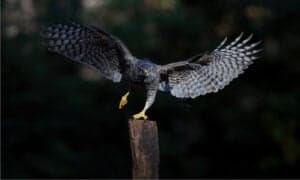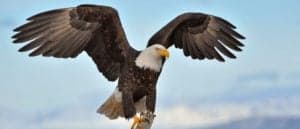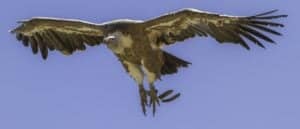Cassowary Speed: How Fast Can These Giant Birds Run?
Everyone knows ostriches are speedsters, but are they the fastest bird? Another large, flightless bird is the cassowary. Unlike ostriches, which live in wide-open savannas and deserts, cassowaries live in dense forests less ideal for sprinting. Yet, the speed and athleticism of cassowaries might surprise you. Let’s dig into the speed of cassowaries. Just how fast can they run, and is it faster than an ostrich?
How Fast Can a Cassowary Run?
Cassowaries live in dense rainforests, which is a difficult environment to run in. Yet, cassowaries have several adaptations that allow them to maneuver through forests at surprising speeds.
- Their “helmet”: Look at the picture of the cassowary above, the “helmet” on top of its head is actually known as a casque. The casque of a cassowary can measure up to 7 inches long. It’s also hard, as its primarily made up of the same substance as rhino horns, keratin. Casques serve a functional purpose, as cassowaries run through dense forests they lower their head and the casque clears a path through branches and other vegetation.
- Incredibly strong legs: Move over LeBron James, there’s a new high jumping athlete! Cassowaries can jump 7 feet in the air from a standstill, high enough for a full grown adult to walk underneath them. These incredibly powerful legs help propel cassowaries to impressive speeds.
Thanks to these adaptations cassowaries can run up to 31 miles per hour (50 km). How does that top speed compare to other large birds?
Cassowary Speed Vs. Ostrich Speed
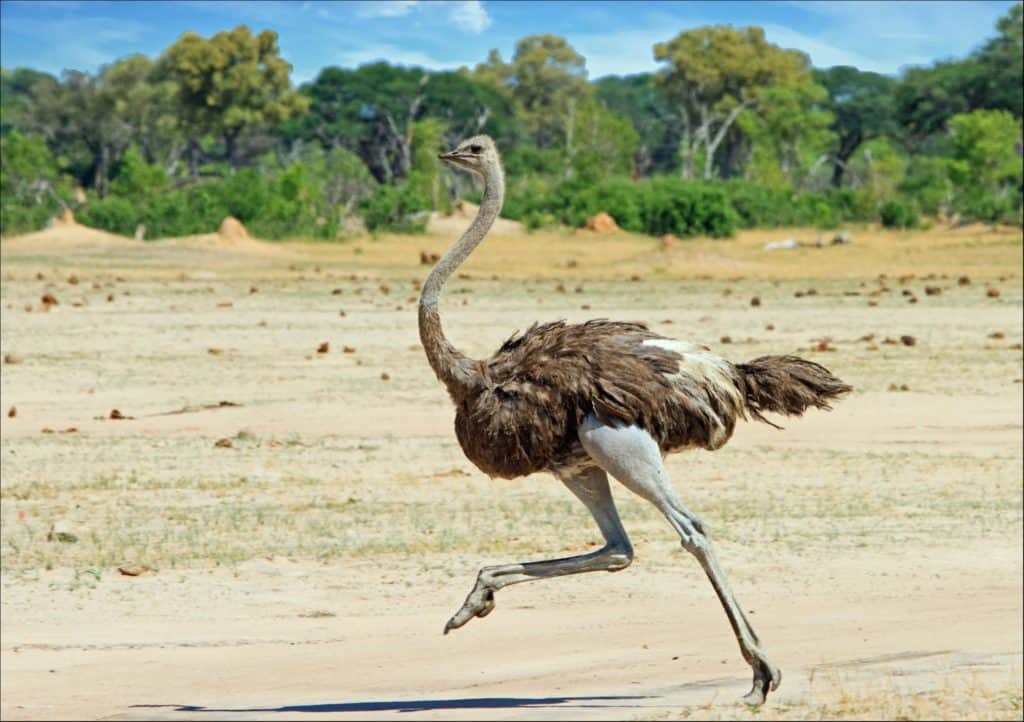
paula french/Shutterstock.com
Cassowaries are impressive birds, but can they outrun an ostrich? The short answer is no. Ostriches are the fastest birds in the world and can reach 45 miles per hour (70 km) in sprints. More impressively, an ostrich can maintain speeds equivalent to a cassowaries top speed for miles of range.
Cassowaries are also topped by another large flightless bird native to Australia, the emu. With a habitat that includes deserts and shrub plains, the environment of emus is conducive to more sprints away from predators and threats. While an emus top speed is often listed about about 30 miles per hour, its likely they could outrun a cassowary as well in a race.
It’s notable that large, flightless bird species like the ostrich, emu, and cassowary survive today while larger flightless birds that were slower like the elephant bird and moa went extinct. We can likely thank the cassowaries remote habitat and speedy evasiveness for its continuing survival when first confronted with human hunters!
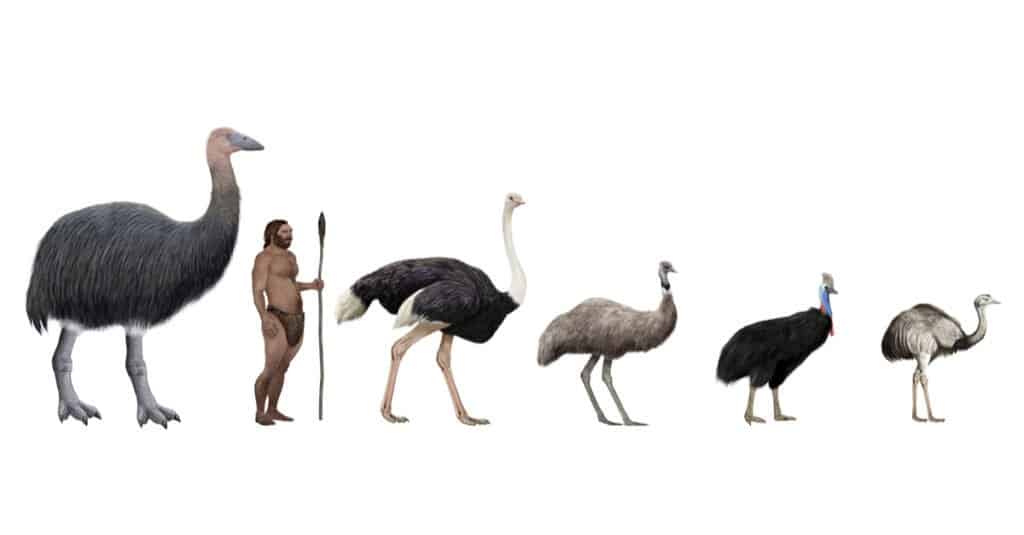
More from A-Z Animals
Everyone knows ostriches are speedsters, but are they the fastest bird? Another large, flightless bird is the cassowary. Unlike ostriches, which live in wide-open savannas and deserts, cassowaries live in dense forests less ideal for sprinting. Yet, the speed and athleticism of cassowaries might surprise you. Let’s dig into the speed of cassowaries. Just how fast can they run, and is it faster than an ostrich?
How Fast Can a Cassowary Run?
Cassowaries live in dense rainforests, which is a difficult environment to run in. Yet, cassowaries have several adaptations that allow them to maneuver through forests at surprising speeds.
- Their “helmet”: Look at the picture of the cassowary above, the “helmet” on top of its head is actually known as a casque. The casque of a cassowary can measure up to 7 inches long. It’s also hard, as its primarily made up of the same substance as rhino horns, keratin. Casques serve a functional purpose, as cassowaries run through dense forests they lower their head and the casque clears a path through branches and other vegetation.
- Incredibly strong legs: Move over LeBron James, there’s a new high jumping athlete! Cassowaries can jump 7 feet in the air from a standstill, high enough for a full grown adult to walk underneath them. These incredibly powerful legs help propel cassowaries to impressive speeds.
Thanks to these adaptations cassowaries can run up to 31 miles per hour (50 km). How does that top speed compare to other large birds?
Cassowary Speed Vs. Ostrich Speed

paula french/Shutterstock.com
Cassowaries are impressive birds, but can they outrun an ostrich? The short answer is no. Ostriches are the fastest birds in the world and can reach 45 miles per hour (70 km) in sprints. More impressively, an ostrich can maintain speeds equivalent to a cassowaries top speed for miles of range.
Cassowaries are also topped by another large flightless bird native to Australia, the emu. With a habitat that includes deserts and shrub plains, the environment of emus is conducive to more sprints away from predators and threats. While an emus top speed is often listed about about 30 miles per hour, its likely they could outrun a cassowary as well in a race.
It’s notable that large, flightless bird species like the ostrich, emu, and cassowary survive today while larger flightless birds that were slower like the elephant bird and moa went extinct. We can likely thank the cassowaries remote habitat and speedy evasiveness for its continuing survival when first confronted with human hunters!





